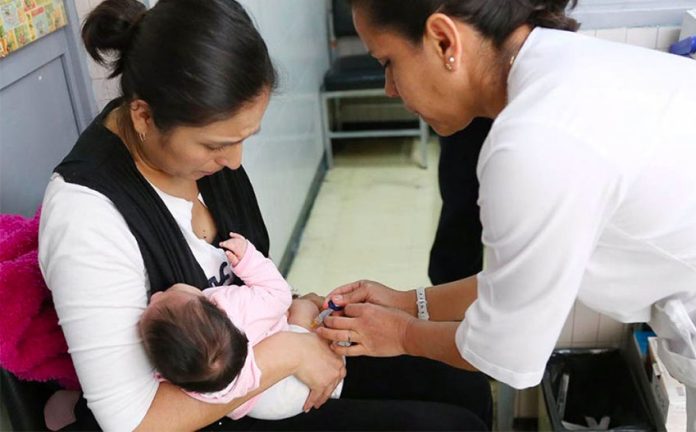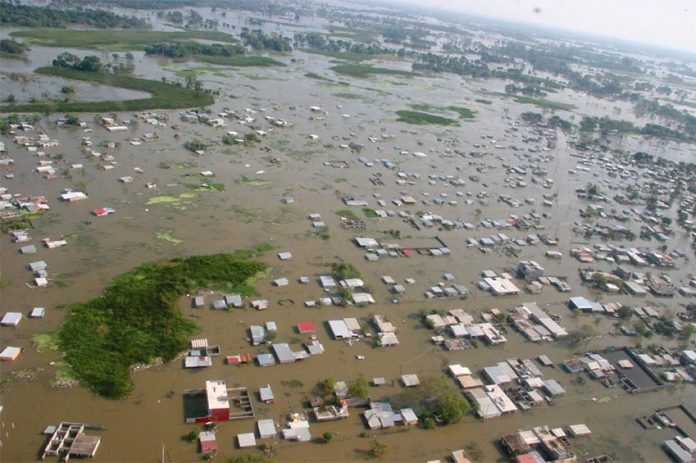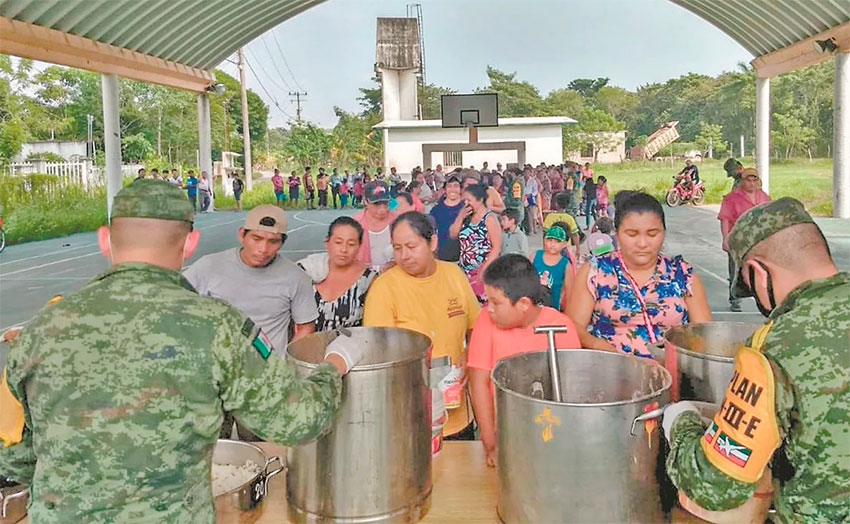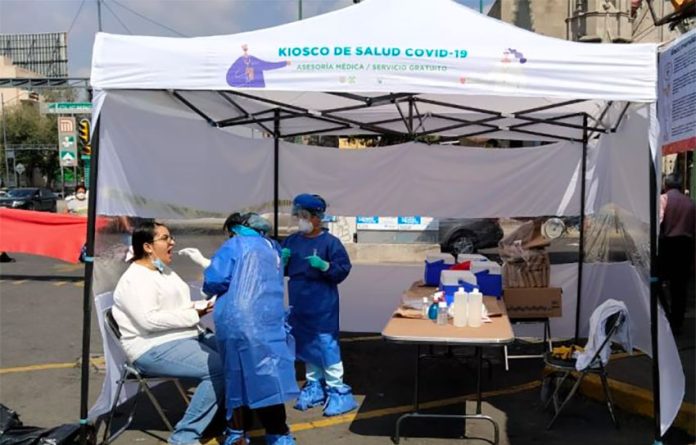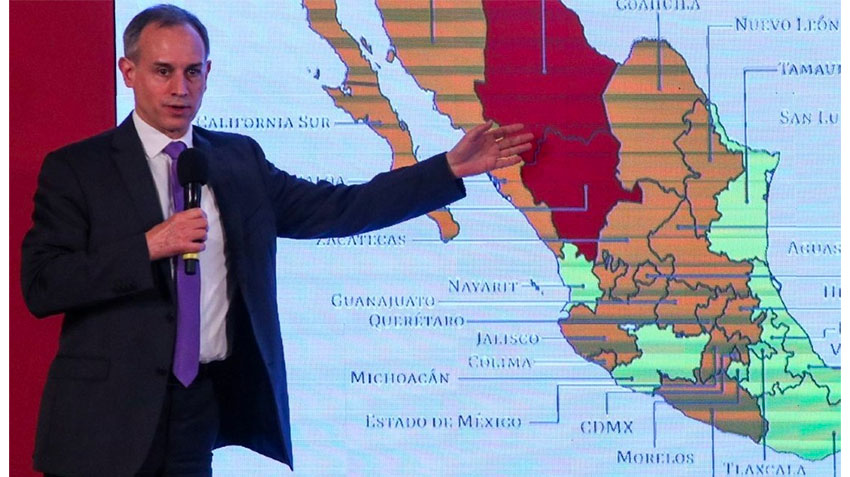Although I’ve seen lentils in mercados all over Mexico, it never occurred to me till now to wonder what their place was in traditional Mexican cuisine. Turns out there are lots of unique lenteja recipes.
In some states, lentil dishes replace meat during Catholic holidays; in others, they’re paired with chorizo or poblano peppers, nopales or pork. My sense is that Mexican cooks like lentils for the same reasons I do: they’re cheap, easy and quick to cook.
They’re also a nice blank canvas for Mexico’s smorgasbord of chile peppers, spices, herbs and distinctive local ingredients.
Mexico is one of the top 20 lentil-producing countries in the world, with the majority grown in Michoacán and Guanajuato. There’s such a demand for lentils here, though, that thousands of tonnes are imported each year, mostly from Canada.
The most commonly found are green lentils, which come in two sizes: the smaller, or “French,” lentils cook faster and are a bit darker in color. There are also brown, yellow and red lentils. You can buy lentejas in bulk in your local mercado or packaged at any grocery store. Always remember to wash and sort through them in case there are any pebbles!
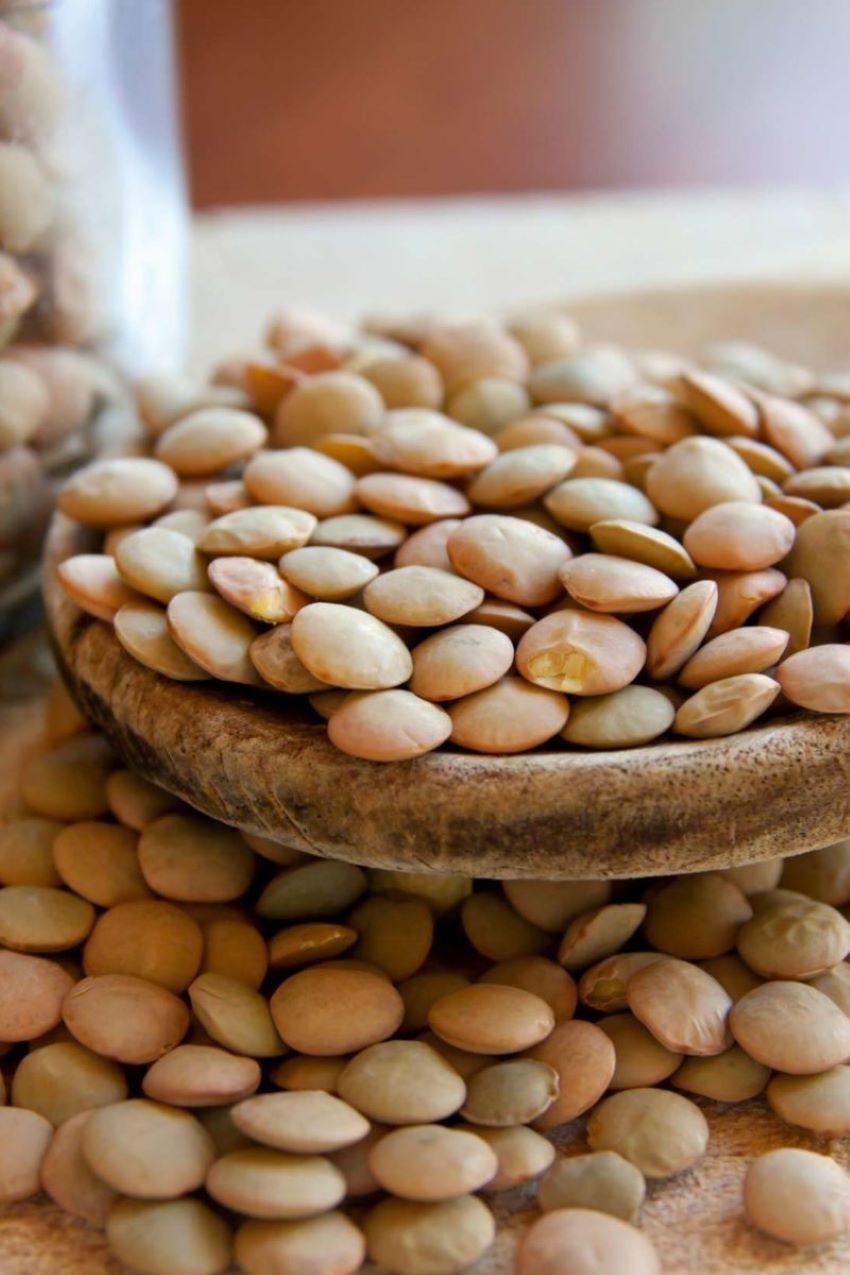
Lentejas Oaxaqueñas
Traditionally served during Lent, this is an unusual, delicious combination of smoky lentils, sweet pineapple and plantains.
- ¾ cup lentils
- 4 cups water
- 4 cloves garlic, halved
- 1 white onion, chopped
- 1 Tbsp. vegetable oil
- 1 ripe plantain, peeled and chopped
- 1 fresh pineapple OR one (10 oz.) can unsweetened pineapple slices, cut into chunks
- 2 Roma tomatoes, chopped
- ¼ tsp. ground cloves
- ½ tsp. allspice
- 1 tsp. salt
Put lentils, 1 tsp. minced garlic, half of the chopped onion and water in a large saucepan and bring to a boil. Reduce heat to low, cover and simmer about 20 minutes or until lentils are tender but not mushy. Drain and reserve liquid.Heat oil in large saucepan. Sauté remaining onion and garlic until onion is soft. Add plantain, pineapple and tomatoes; cook, stirring, until plantains are soft, 15-25 minutes. Add lentils, spices and salt and some of the reserved cooking liquid. Continue cooking until mixture thickens a little; add more cooking liquid or vegetable or chicken broth so dish has a thick, stew-like consistency. Serve over rice.
Lentil Soup with Nopales
- ½ cup lentils, rinsed
- 6 cups water
- ½ lb. fresh nopal, diced
- Salt to taste
- 1 green onion, quartered
- ½ pound tomatoes, chopped
- 2 cloves garlic, minced
- 2 Tbsp. vegetable oil
- ¼ cup finely chopped onion
- 1 jalapeño, minced
- 1 cup chicken stock
- ¼ cup chopped cilantro
Bring lentils and water to boil in large pot, lower heat and cook until lentils are mushy. Separately boil nopal with salt and the green onion until tender. Drain, discard onion and rinse the nopal.
Blend tomatoes and garlic to make a purée and set aside. Heat oil in small skillet, add onion and jalapeño; cook until softened. Add tomato/garlic purée; cook until almost dry and then add to lentils along with stock and nopal. Cook, covered, for 20 minutes on low heat. Stir in cilantro. Serve with warm tortillas or bolillos. – The Essential Cuisines of Mexico by Diana Kennedy
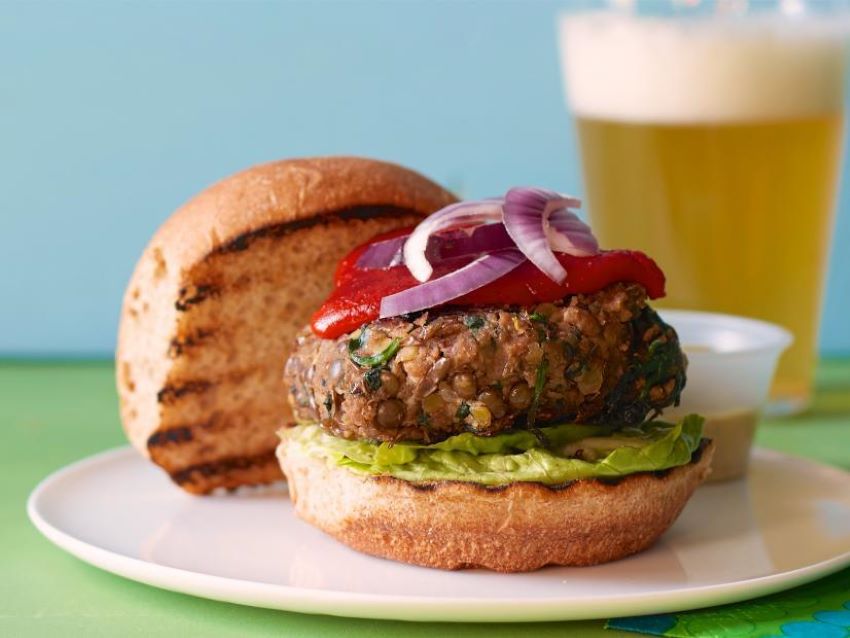
Lentil Burgers
- ¾ cup lentils, washed
- 1¾ cups plus 1 Tbsp. vegetable broth or water
- 2 tsp. olive oil
- ½ onion, minced
- Juice of ½ lemon
- Salt
- 8 oz. fresh baby spinach leaves, chopped fine
- 2 big cloves garlic, minced
- Salt & pepper
- ½ tsp. ground cumin
- 1 cup breadcrumbs
- ½ cup pecans, toasted, finely chopped
Bring lentils and 1¾ cup of broth to a boil in medium saucepan over high heat. Reduce to low, partially cover and simmer until lentils are soft and liquid is absorbed, about 30 minutes. Transfer to medium bowl with remaining 1 Tbsp. broth. Mash well; set aside.
Heat oil in large nonstick skillet over medium heat. Add onion, lemon juice and ¼ tsp. salt and cook, stirring, until softened. Stir in spinach, garlic, cumin and 1 tsp. pepper; cook 3 minutes. Add breadcrumbs, pecans, spinach mixture and ¾ tsp. salt to lentils and mix thoroughly. Cover and refrigerate for at least 1 hour or overnight.
To cook: Preheat grill to medium-high. Form into six 4-inch patties and spray with cooking spray on each side. Grill until grill marks form, about 3 minutes per side. To cook in a non-stick skillet, coat pan with olive oil and sauté till browned, crispy and heated through.
Lentil Paté with Cumin, Cilantro & Lime
- 4 cups water
- 1small onion, finely chopped
- 1cup lentils, washed
- 1 tsp. ground cumin
- Salt & pepper
- 1 cup cilantro leaves, slightly packed
- ¼ cup olive oil
- 2 Tbsp. fresh lime juice
Combine onion, lentils, cumin and water in a saucepan; add salt and pepper. Bring to a boil, reduce heat to medium-low, and simmer until lentils are falling-apart tender, 25–30 minutes. Cool. In a blender, purée lentil mixture, cilantro, oil and lime juice until smooth; taste and season. Spoon into a bowl, drizzle with a little more olive oil and lime juice; top with more cilantro.

Coconut Lentil Soup
You can use the water and meat from a fresh coconut instead of canned or packaged. To make coconut “milk,” blend coconut water with some of the meat till smooth.
- 2 Tbsp. coconut oil
- 1 large onion, chopped
- 3 garlic cloves, minced
- One 3-inch piece of ginger, peeled and grated
- ½ -1 jalapeño, minced
- 1-3 tsp. garam masala or curry powder
- One 13½ oz. can full-fat unsweetened coconut milk
- 5 cups water or vegetable stock
- 1 cup lentils, washed
- ½ cup unsweetened shredded coconut
- 4-6 oz. fresh baby spinach
- One 15 oz. can crushed tomatoes
- Salt & pepper
- Splash or two of soy sauce
- 1 tsp. vanilla extract
In medium saucepan, heat coconut oil over medium heat until hot. Add onion, stirring occasionally, until transparent and beginning to turn golden, 6-8 minutes. Stir in garlic, ginger and jalapeño; cook 5 minutes. Add garam masala or curry.
Stir in coconut milk, lentils, shredded coconut, tomatoes with their juice, and stock/water. Bring to a boil, then turn to low and simmer, 25-30 minutes, stirring occasionally until lentils break down and soup thickens. Add more water if needed. Stir in spinach and soy sauce. Season with salt and pepper. Turn off heat, stir in vanilla. Serve with a dollop of plain yogurt.
Janet Blaser has been a writer, editor and storyteller her entire life and feels fortunate to be able to write about great food, amazing places, fascinating people and unique events. Her first book, Why We Left: An Anthology of American Women Expats, is available on Amazon. Contact Janet or read her blog at whyweleftamerica.com.



